Wireless Network Problems
Aussie Cabling is experienced in helping Perth home and business owners resolve wireless connectivity issues. Below is a list of information to help you resolve most problems you may be having. If you require further assistance, Aussie Cabling is only a phone call away.
Wireless Performance Issues
Wireless networking is a very convenient technology that typically allows you to setup a computer network in a small area such as your home or office very quickly, very easily and without too much expense. Unfortunately, there are a significant number of potential problems that you can encounter, which can cause your wireless network to perform poorly or fail altogether. The single biggest cause of wireless performance issues is due to the very nature of the technology. Communication is achieved via broadcasting a radio signal through the air. This means that only one device can broadcast at any given time, whilst all other devices listen and wait for it to finish before being able to broadcast a response or new communication themselves. The more devices you have on a wireless network the slower it will be.
A cabled network will provide greater reliability, robustness and performance and should always be considered as a first option. This is because a cabled network will allow all devices to broadcast simultaneously. Even more importantly, it will allow two devices talking to each other to broadcast and receive simultaneously as well, dramatically improving the performance of your network. If installing network cabling is not a viable option, then following is some information and suggestions to help you resolve any wireless network problems.
Causes of Wireless Problems
These are the most common causes of wireless network problems in a home or office.
- Low signal strength
- ★ Distance - signal strength decreases the further away you are from the router
- ★ Obstacles - walls and furniture, especially metal and metal lined furniture such as mirrors, block signals
- ★ Antenna power level - some WiFi routers will not operate at maximum power output by default
- ★ Polarisation - The orientation of the antenna will affect signal strength
- ★ Orientation - most router antennas are omnidirectional but they will typically still have areas to the front / back / sides / above and below the router where signal strength will be better
- Signal Interference
- ★ Phones - the older style 2.4GHz can interfere with your WiFi signal
- ★ Microwaves - when operating, they put out very high frequencies which interfere with WiFi signals
- ★ Electricity - Electrical cables are a big source of interference to WiFi signals
- Media competition
- ★ Too many devices - Most domestic WiFi routers can only handle a small number of wireless connections
- ★ Neighbours WiFi - Most routers by default operate on Channel 6, meaning your neighbours router is likely broadcasting on the same frequency as yours
- Slow speed
- ★ Distance - Data transfers speeds decrease the further away you are from the router
- ★ Competition - Data transfer speeds decrease dramatically the more devices you have sharing connection to the same router
Solutions to Wireless Problems
If it is possible, you can try these things to fix your wireless network problems
- Low signal strength
- ★ Distance - Try moving your router to a more central location in the house. Also try installing a wireless repeater
- ★ Obstacles - Try moving obstacles or positioning your router to minimise obstructions. Try positioning large / heavy furniture and mirrors on external walls
- ★ Antenna Power Level - In your routers WiFi settings, see if you can increase the power output of the antenna. Some routers also have removable antennas and you can replace them with higher gain antennas
- ★ Polarisation - Where antenna's can be moved, make sure they are all orientated the same way
- ★ Orientation - try positioning the router so that it is high off the ground. Also try turning the router 45 or 90 degrees and seeing if that helps
- Signal Interference
- ★ Phones - move your router away from your cordless phone and consider upgrading your cordless phones to ones that use 5.8GHz or ones which are declared WiFi friendly
- ★ Microwaves - Don't use your microwave at times when you need your WiFi to work
- ★ Electricity - Move electrical cables away from your router and from the vicinity of any wireless network adapters. If you are using a wireless device that is connected to power, ensure the AC Adapter is moved as far way from the devices antenna as possible
- Media competition
- ★ Too many devices - limit the number of devices which can connect wirelessly or consider upgrading your WiFi router
- ★ Neighbours WiFi - Many free mobile phone apps will tell you the WiFi channel that all the available WiFi networks are broadcasting on. Login to your router and ensure that it is using a channel that is different to all your neighbours
- Slow speed
- ★ Distance - Use of a wireless repeater can be helpful in overcoming problems caused by devices a long distance apart.
- ★ Competition - Often the best solution is a combination of cabled and wireless network devices. Typically, anything stationary should be cabled, with wireless connectivity provided for mobile devices such as phones and netbooks.
Contact
- Name:
- Email Address:
- Phone Number:
- Leave this field blank: (Helps stop SPAM)
- Your Address & Message:
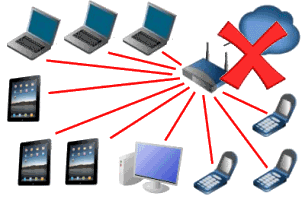
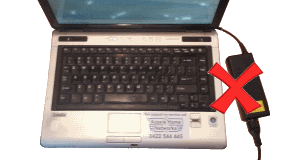
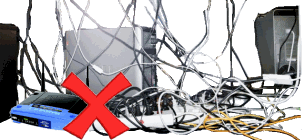
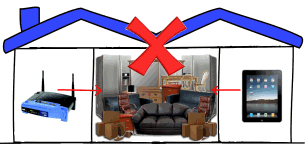
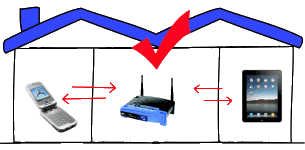



 ★
★
